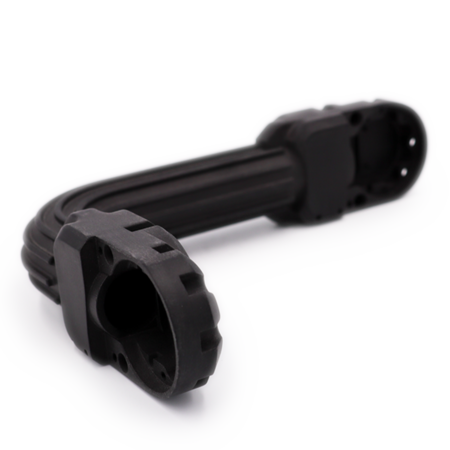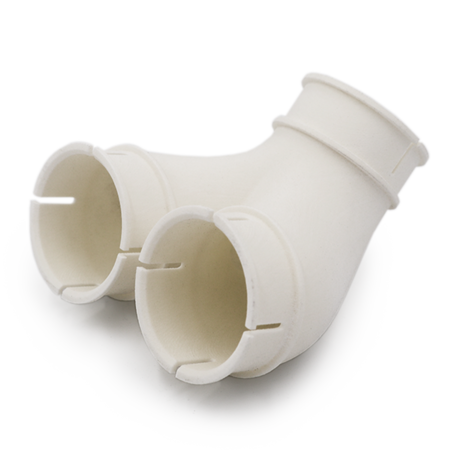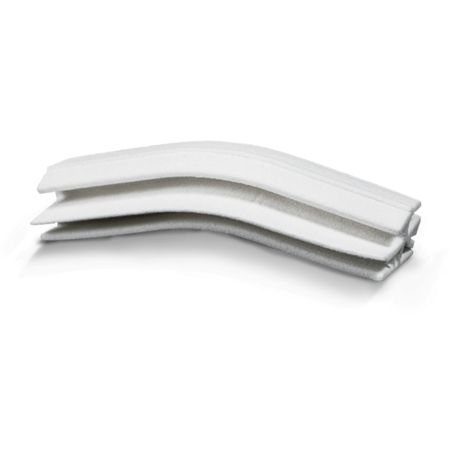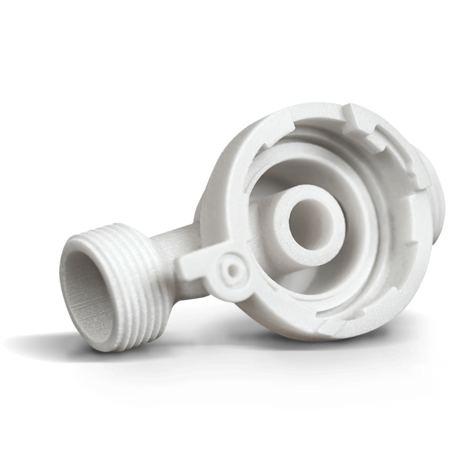“If I were to add up all the tooling costs we’ve eliminated, all the secondary rework we didn’t have to perform, all the post-processing steps we’ve eliminated, all the parts we’ve made, and all the man hours we’ve saved by using our SLS system to create prototypes and parts, I could easily say we’ve saved enough to pay for the system—and potentially even a second machine,” says Jerry Clark, manager of the Air Vehicle Configuration Design, Integration and Rapid Development Department of The Boeing Company in Mesa.
In the span of five months, Clark’s department built more than 400 parts on its SLS system. Most were made with DuraForm Polyamide (PA) material. DuraForm is filling many of the prototyping and direct manufacturing needs Boeing has in Mesa as the company works to design, test and produce a variety of air vehicle products, including the AH-64D Apache Longbow helicopter.
Why the SLS system became a “high priority”
“We were looking at ways we could potentially reduce cycle times, build tools more quickly, and in some cases, eliminate the need for tooling and other post-processing steps altogether. Plus, we saw areas where the SLS system could help us with research,” says Clark. “That’s what prompted us to purchase our own system. We saw it as an opportunity to significantly reduce cycle time.” Clark notes, “We chose the SLS machine because of its flexibility, the variety of materials it can use, its potential usage in research, and its increasing potential with metals.”
Many of the DuraForm parts Boeing makes on its SLS system in Mesa go directly on prototype aircraft, vehicles and mock-ups. Clark notes that “DuraForm works well in areas where we have to make functional parts for the secondary structure, such as ducts, fairings and other non-load carrying components and parts.” Boeing also is looking into using DuraForm to create load-carrying components and parts.
These parts usually undergo a variety of tests, including those measuring tensile strength, heat resistance, fatigue, material consistency and resistance to moisture and various fungi. The combination of tests performed depends on how and where the parts are used, what conditions and hazards they may be subjected to, whether humans will be in contact with them, and many other factors.
Minimizing potential for human error
Boeing’s ability to make DuraForm prototype parts directly on its SLS system has minimized or eliminated the long and often tedious processes of generating part drawings, creating prototype tooling, producing prototype parts and performing postsecondary fabrication steps. As a result, Boeing saves time, reduces costs and lessens the likelihood of repeating the many types of human errors that can occur in the various stages of development.
“It could be rather painful to go through the process of having prototype tooling and parts made, only to find out they don’t fit or work right. In contrast, with our SLS system, we often go directly from computer data to prototype part to installation on the aircraft. It’s another type of paperless system. If a picture is worth a thousand words, then a physical 3-D mockup is worth 10,000 words,” says Clark.
Digital manufacturing small quantities
Boeing Mesa also is exploring the use of DuraForm parts to fill orders for limited-production part quantities. This solution has great potential at Boeing.
Clark explains, “Our primary customer is the U.S. Army, but we sell to foreign defense forces as well. Foreign customers may want the same aircraft or vehicle that the U.S. military uses, but they may have special requirements and requests for customization or changes.”
For example, customers may want to add their own avionics equipment onto the vehicle. “Therefore, we may need a different cooling system configuration and associated ducting arrangement,” says Clark.
“If our customers purchase 40 or 50 aircraft a year, and Boeing has to make only three or four cooling ducts per aircraft, it doesn’t make sense to spend the time or money producing expensive tooling and performing the multiple lay up steps,” says Clark. “Here, we can produce the DuraForm parts the customer needs directly on our SLS system. Later, if there is greater demand for more parts, we can go forward with production tooling by building the tooling itself with our SLS system.”
Clark adds, “The key here is the ability to customize a baseline quickly and rapidly and produce the parts per the customer’s needs without adding in a lot of tooling time or costs to the process.”
Clark notes that Boeing has used DuraForm parts and prototypes for a long and growing list of applications, including creating visualization samples for suppliers; providing quotes; producing samples of existing parts that could not be produced any other way except through dissection of a complex assembly; conducting internal design review and technical review sessions with upper management; performance reviews (with customers’ sample parts provided); and producing scale models for testing.
“Another benefit we are seeing is improved communication with our suppliers and team members and also among colleagues.”
“This is particularly true when technical staff members are explaining a part to non-technical staff members,” says Clark. “When you get people to understand each other and communicate, it definitely helps the projects run more smoothly.”
“Probably one of our greatest challenges here is getting our people to understand that our SLS system is not just a machine for making pretty models,” Clark says. “Sure you can do that, but right now we are using it for actual parts, functional parts, rapid prototyping, rapid tool development and rapid manufacturing.”
Clark adds, “We want more people within the corporation to know this and to understand and see the potential applications and uses.



